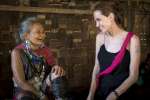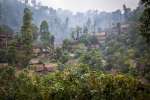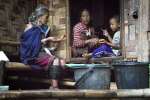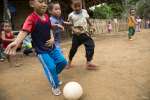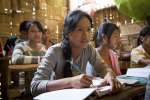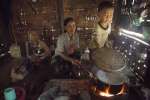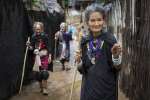Angelina Jolie revisits Myanmar refugees on World Refugee Day
UNHCR's Special Envoy Angelina Jolie spent this year's World Refugee Day with Karenni refugees from Myanmar. Some have been in exile in Thailand for 30 years, making this one of the longest-running refugee situations in the world.
On her fourth visit to the refugee camps in Thailand, Jolie met Baw Meh's family, three generations of refugees who have lived in Ban Mai Nai Soi camp since 1996.
The family told Jolie they fled Myanmar's Kayah state thinking they would return home shortly. Eighteen years later, they are still here. Baw Meh, 75, lost her husband last year. He died before he could fulfill his dream of returning home. Some of their family members have been resettled to third countries. Others have chosen to stay. Baw Meh has refused to go, preferring to stay close to her village.
Like many refugees along the border, her family is watching the reform process in Myanmar closely and mulling the prospect of eventual return. "After 30 years in exile, the best solution we can give these refugees is the right and power to choose their own way forward," said Jolie. "This is our chance to get it right, to break the vicious cycle of conflict and displacement once and for all."




